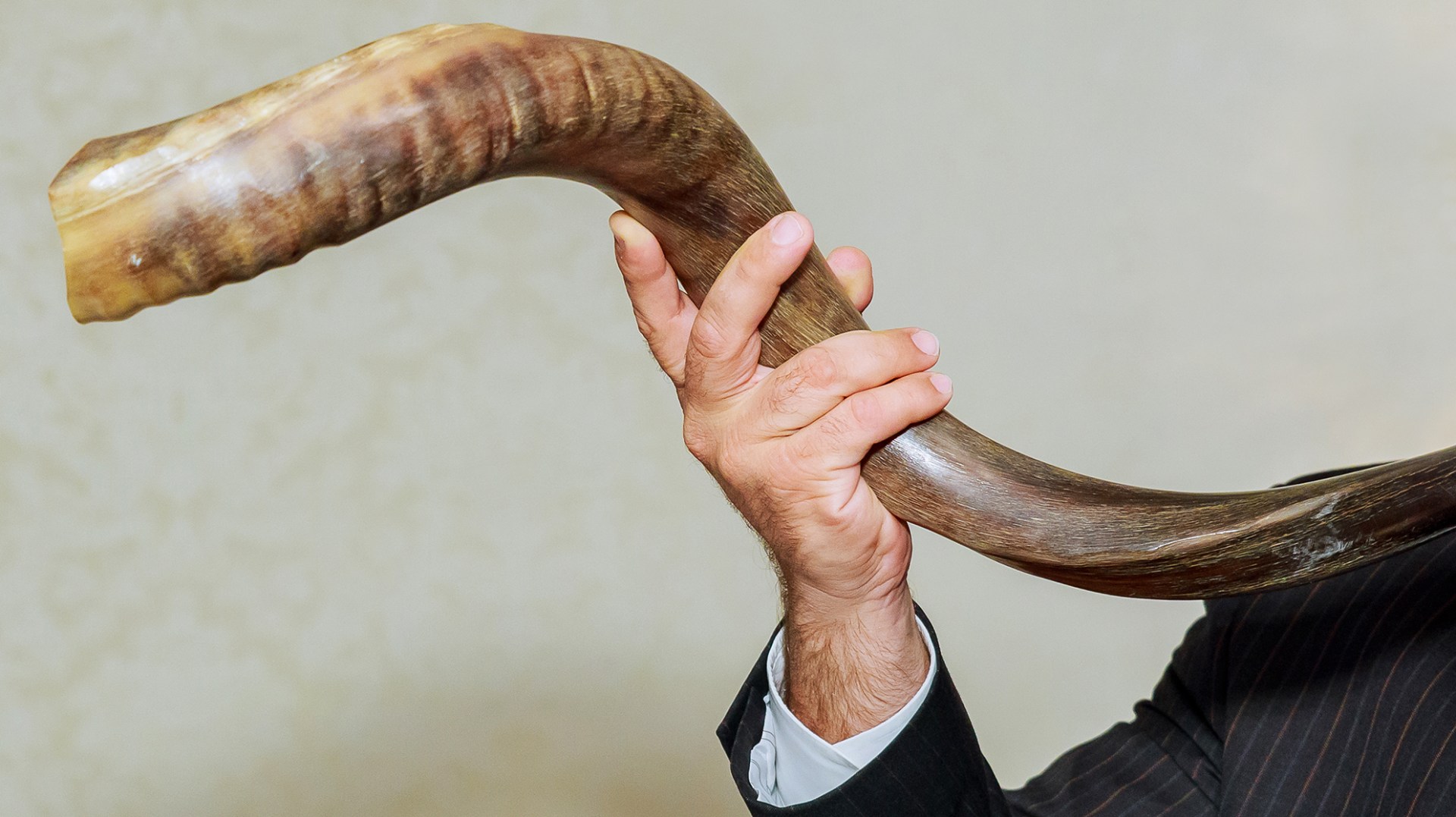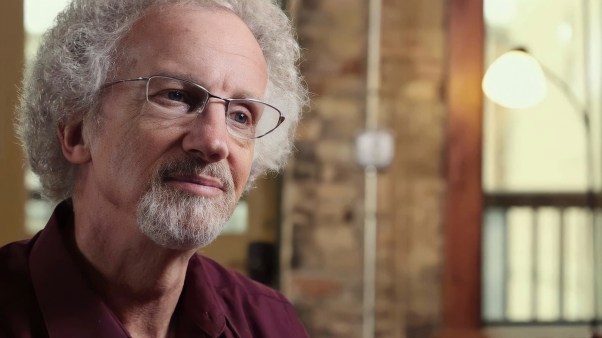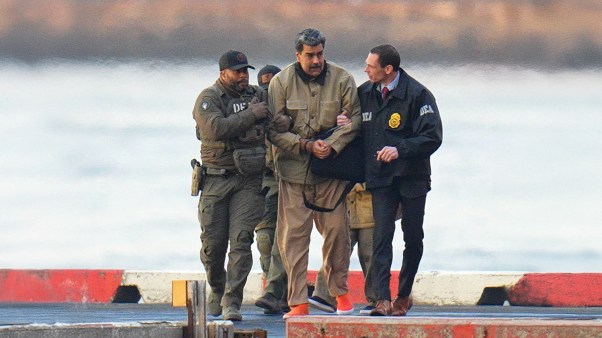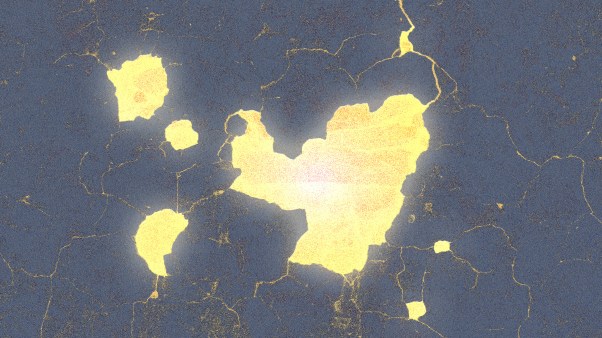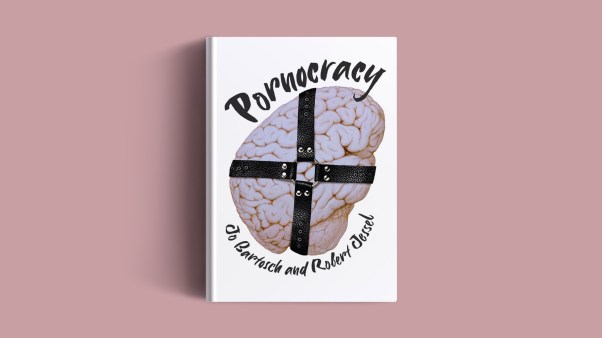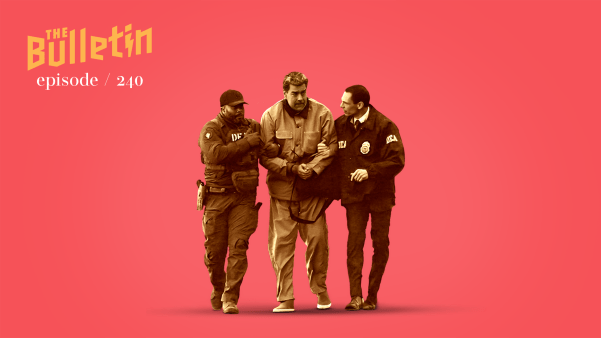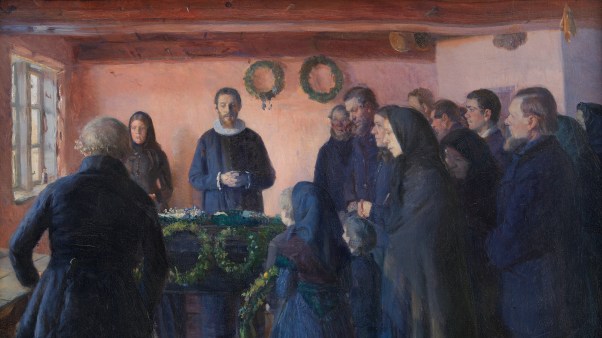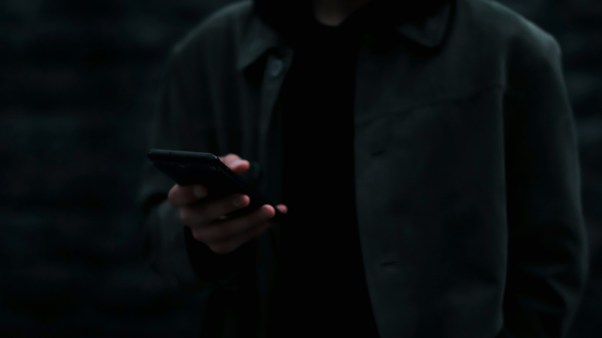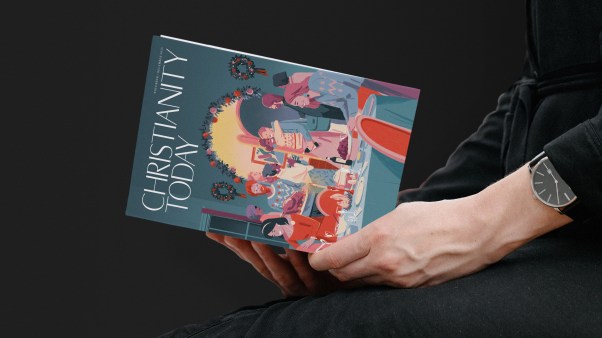Mike Huckabee, one of several American Christians in Jerusalem for the opening of the US embassy last week, announced that he planned to commemorate the occasion on live TV with a Hebrew greeting and by blowing a shofar.
The shofar, an obscure instrument made of a ram’s horn and traditionally blown during the Jewish High Holidays, has made its way into evangelical hands in recent decades. Some Christian Zionists, Holy Land pilgrims, and even worshipers at charismatic churches in the United States use the curled horn to call out in celebration and identify with the ancient heritage of their faith.
Crowds of evangelicals at pro-Israel parades, conferences, and worship services turn up with Israeli flags, prayer shawls, and their own shofars. More than a dozen options for the spiraled instrument are for sale at online Christian bookstores.
Sounding the shofar often accompanies the opening prayer or worship set at events held by groups like Christians United for Israel (CUFI), the Christian Zionist organization founded by John Hagee (who also attended the embassy opening last week).
Christian use of the shofar has grown in certain traditions over the past 25 years, along with interest in the Holy Land and dispensationalist understanding of the end times. Believers who incorporate the shofar often echo biblical references to sounding a trumpet, such as its use in warfare by Gideon’s army (Judg. 7:15–22) or the battle of Jericho (Josh. 6), as a call for repentance (Is. 58:1, Hos. 8:1), as a way to gather an assembly (Num. 10:3, Joel 2:15), or for other occasions of praise and proclamation (Psalms and Revelation).
For Christians, blowing the shofar “seems to have an eschatological aspect,” said messianic Jewish theologian Daniel Juster, founder and president of Tikkun International.
“As Israel is fulfilling prophecy, the shofar announces God’s intervention and fulfillment; so the shofar shows support for Israel with the idea that God is fulfilling prophetic events,” he said. “The shofar announces those events. The move of the embassy on the 70th anniversary would be seen as a prophetic event.”
But for Jewish people, the sound of the shofar often comes as a somewhat unexpected alarm outside of the prescribed times and patterns that correspond with holiday rituals. Traditionally, it’s blown every day but Shabbat in the month leading up to the High Holidays, during services for the Jewish New Year (Rosh Hashanah), and at the end of the Day of Atonement (Yom Kippur).
“To Jewish ears, a shofar blast serves primarily as a call to repentance or a call to arms. It’s not something we hear every day, or even every week,” said Monique Brumbach, executive director of the Union of Messianic Jewish Congregations (UMJC), whose congregations follow Jewish tradition to use the shofar in the month preceding the High Holidays and on Rosh Hashanah, which the Torah even refers to as the “Day of Blowing.”
“In some Christian worship services, there is a shofar blast every few minutes. It can feel jarring,” she said. “I’d compare it to keeping a Christmas tree in your house all year long. If you use a worship instrument every day or every week, it becomes common, like a piano or a guitar. There is something primordial about the sound of a shofar, but it tends to lose its resonance when you hear it all the time.”
It’s actually Christians who are responsible for most sounds of the shofar outside of the traditional trumpeting during the High Holidays.
Though only about 2 percent of Israel’s population is Christian, Christian pilgrims make up more than half of the country’s annual visitors. At times, they can be hard to miss: Those who visit Israel during the Feast of Tabernacles, or Sukkot, often come waving banners and blowing shofars in celebration, said Tuvya Zaretsky, president of the Lausanne Consultation on Jewish Evangelism and one of the founders of Jews for Jesus.
“It’s not unusual to see (Gentile) Christians blow a shofar,” he said. “It is culturally regarded as foreign to the Israelis, but generally tolerated as it is viewed as an expression of Christian enthusiasm.”
Zaretsky noted that in addition to Messianic Jewish congregations who use the shofar, some Assemblies of God and Calvary Chapel churches have incorporated the instrument in worship over the past 20 years.
Christians “might keep a shofar to indicate a connection with Jewish roots of their Christian faith, with the Bible, or as a memento from a trip to Israel,” he said, warning about the possible commodification of the instrument or any implication that owning one would bring God’s favor.
Followers of Christ who have adopted the shofar have taken it beyond the Jewish holiday observances to proclaim victory and signal deliverance. Messianic rabbi Eric Tokajer likens it to the use of the bugle.
“For the majority of those who will gather in synagogues to hear the shofar, the purpose of the sound is to mark the opening of the doors of repentance for the period of time between Rosh Hashanah and Yom Kippur,” wrote Tokajer for Charisma. “However, the shofar was used to proclaim the coronation of a King, as well as its use in warfare to direct the army. It is these two uses that have been lost to most people.”
A group of 300 Christians, sized to match Gideon’s army in the Bible, sounded shofars across a 55,000-person crowd at Lou Engle’s The Call event in Tennessee in 2007. “You could feel the presence of the Lord,” one attendee said. “In the sound of the shofar, we pray our destinies are released and that the city of Nashville would see a new wave of the Lord.”
Ricky Skaggs, a country musician who has been an outspoken supporter of Israel, also blew a shofar during his performance at the prayer gathering, as well as at the Southern Baptist Convention annual meeting a couple years before.
Gary Burge, a New Testament scholar who has studied Christian Zionism, sees both religious and political motivation behind Christian use of the shofar.
“The shofar, of course, has [Old Testament] roots related to the temple and worship. But Christian Zionists use it as a part of their religious aesthetic to replicate Jewishness in their ceremonies,” said Burge, author of Whose Land? Whose Promise? What Christians Are Not Being Told About Israel and Palestine as well as Jesus and the Land: The New Testament Challenge to Holy Land Theology.
“But now it has taken on political symbolism as a rallying horn for political assertion. So it is telling [that] when President Trump does something political—[for example] the Jerusalem embassy—the shofars come out,” he said. “This signals the merging of religious imagery with political sentiment that today is increasingly common among evangelicals. So, in this case, it is the misappropriation of an ancient Hebrew religious symbol for conservative political events.”
Christian shofar ministries enlist believers to play the instrument at events like the March for Life, the National Day of Prayer, and other public rallies. “The time has come to sound the shofars daily, to call for a holy assembly and a time to repent and be proactive not just pray,” declares one such group, Shofar Call International. Christians with shofars also turned up at some of Trump’s “Make America Great Again” campaign rallies and at the 2016 Republican National Convention.
American evangelicals tend to have strong biblical views about Israel that end up leading to strong political views about the modern Jewish state. White evangelicals are far more likely than Christians actually living in the Holy Land to believe God gave the land to the Jews, and a majority believe the US government should be more pro-Israel.
And the shofar has played a role in bringing Christians together in support of Israel.
Rutgers University religion professor Joseph Williams observed that the fervent advocacy for Israel among Pentecostal and charismatic traditions actually grows out of an immersive experience with Jewish ritual and symbols—including the sound of the shofar.
By incorporating shofars, banners, Jewish dancing, and Hebrew songs alongside political speeches and sermons, Christian Zionist leaders have been able to build a broader pro-Israel coalition.
“All of the pageantry incorporated into Hagee’s [CUFI] events could be read simply as an elaborate effort to rally the troops on behalf of Israel,” wrote Williams in the journal Church History in 2015. “A simplistic focus on the link between conservative Christian support for Israel and premillennial eschatology misses the way in which ritualized expressions of Christian Zionism have helped forge a cohesive movement in the U.S. and abroad.”
Blowing the shofar has become one way Christians proclaim their support of Israel, both to themselves and the watching world.
“By utilizing the shofar in worship services and other events, they can show Israel and the world that they support Israel,” said Neal H. Surasky, a member of the Alliance for the Peace of Jerusalem and the branch director for Chosen People Ministries in Washington. “Equally as important, though, is that sounding the shofar, or hearing the shofar, can give a sense of belonging.
“There are certainly other ways to do this, as well, such as displaying the Israeli flag prominently, but there seems to be something special about the sound of the shofar,” Surasky said. “This should not be surprising, as Psalm 89:16 says, ‘How blessed are the people who know the joyful sound!’ This joyful sound is the teruah (blast) of the shofar.”

